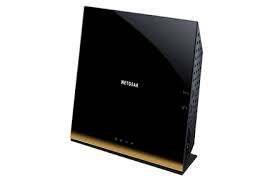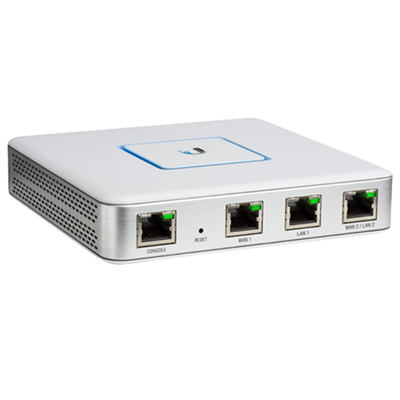
AC1750 WiFi—450+1300 Mbps speeds
- Broadcom BCM5300 chip rev 1
- 5GHz: IEEE® 802.11 a/n/ac
2.4GHz: IEEE® 802.11 b/g/n - 2 USB Ports: one USB 3.0 and one USB 2.0 port
- 4 10/100/1000Mbps LAN Ports
- 64/128-bit WEP,WPA / WPA2,WPA-PSK/ WPA2-PSK encryption
Firmware Version: DD-WRT v3.0-r48810 giga (05/06/22)
Kernel Version: Linux 4.4.302 #15610 Fri May 6 04:36:36 +07 2022 mips

performs extremely well with dd-wrt firmware
Works well with Windows (XP, 7, 8 and 10) clients, MacOS, Android, iOS, Blackberry and Playstations. USB keys may get hot when remained inserted for a long period. Supports three simultaneous networks, including a guest network. Great network performance for speed and coverage.
upgraded to DD-WRT v3.0-r48810 giga (05/06/22) – downloaded from the ftp download site. Feedback about this firmware can be found on the DD-WRT Forum
information about the DD-WRT for the R6300 v1 router can be found on the DD-WRT Wiki
Upgrade to dd-wrt firmware
How to upload firmware to a Netgear router using a TFTP client.
This router has been upgraded from Netgear Firmware Version V1.0.2.78_1.0.58 to a dd-wrt firmware.
Please refer to the dd-wrt.com site for the detailed documentation and instructions.

Check also the articles on MyOpenRouter.com (Downloads are here).
The key to a successful upgrade is to reset the router before and after each step. Hence, after each step, the router will restore its default values. This R6300 V1 model was initially installed with the Kong K3-AC version. Once this was succesfully completed and tested, it was upgraded to the Firmware Version: DD-WRT v24-sp2 (10/06/14) kongac – build 25015M-SP1. Later I tried with DD-WRT v3.0-r40672 giga (08/17/19) but found it unstable and returned to DD-WRT v24-sp2 (04/17/14) kongac.

Due to several short sequential power cuts the firmware got corrupt. This was fixed by uploading the DD-WRT v3.0-r40672 giga (08/17/19) using a TFTP Client.
Read also The Silicon Underground articles about DD-WRT settings recommendations.
Wireless settings used, based on other user’s recommendations:
Regulatory Domain – EUROPE (change this to your country’s setting)
Regulatory Mode – off
TPC Mitigation Factor – 0
wl1 (5 ghz)
Wireless Mode – AP
Wireless Network Mode – AC-Only
Wireless Channel – 108 (DD-wrt exposes the middle frequencies under 149 and above 48 as selectable [per DFS preemption])
Channel Width – 80mhz
Extension Channel – Upper Lower (depends on the channel you use. lower lower for above 149, upper upper for below 48 )
Optimize Multicast Traffic – enabled
Explicit Beamforming – enabled
Implicit Beamforming – enabled
Airtime Fairness – disabled (this currently causes wireless dropouts over time)
Wireless Security:
WPA2 Personal with AES only (unless you run a RADIUS server or something, in which case choose enterprise..)
Advanced Settings (both bands):
Basic Rate – All
Transmission Rate – Auto
CTS Protection Mode – Auto
Frame Burst – Enabled
Beacon Interval – 100 (set this a bit higher than 100 to save mobile clients some battery. Not too high so that wireless client’s don’t drop out from missed beacons)
DTIM interval – 1 (set this higher for battery saving of mobile clients, but since it works in tandem with beacon interval, it can cause drop outs if set too high as well)
Fragmentation Threshold – 2346
RTS Threshold – 2347
Max Associated Clients – 128 (Personal preference. Say you want to restrict a certain number of IP’s for wired clients only. This setting would prevent wireless clients from taking all the IP addresses in the address range from the DHCP server)
AP Isolation – Disabled
TX Antenna – Auto
RX Antenna – auto
Preamble – Long (Long is for compatibility with older wireless devices. Most everything within 15 years works with short)
Shortslot Override – Short (another compatiblity setting that affects G-clients in relation to older B-clients. Reduces the time in between sending packets to clients after collisions)
TX Power- Auto (This will change as needed for the client while obeying regulatory domain)
Bluetooth Coexistence Mode – Preemption (tells a bluetooth client which 2.4ghz channel the router is using to avoid transmitting on that frequency)
Wireless GUI access – enabled (else your wireless clients can’t configure the router)
Radio Time Restrictions – Disabled (personal preference)
WMM Support – Enabled (Wireless-N and newer require this for higher transmission rates)
No-Acknowledgement – Disabled (disable this if you are getting frequent throughput drops from a noisy wireless environment)
Configure a Guest WiFi network with dd-wrt firmware
Refer to the the tutorial: ‘Guest WiFi + abuse control for beginners‘
My objective of a guest network is to offer isolated, yet protected, access to the Internet. Guest users should not have access to my private LAN. This can be achieved with the following settings:
Wireless Basic Settings (‘Virtual Interfaces’): AP isolation enabled.
Network Configuration: Unbridged, NAT enabled.
Enable Forced DNS Redirection and fill in the Optional DNS target field.
You will need to assign a dedicated network range and enable DHCP.





